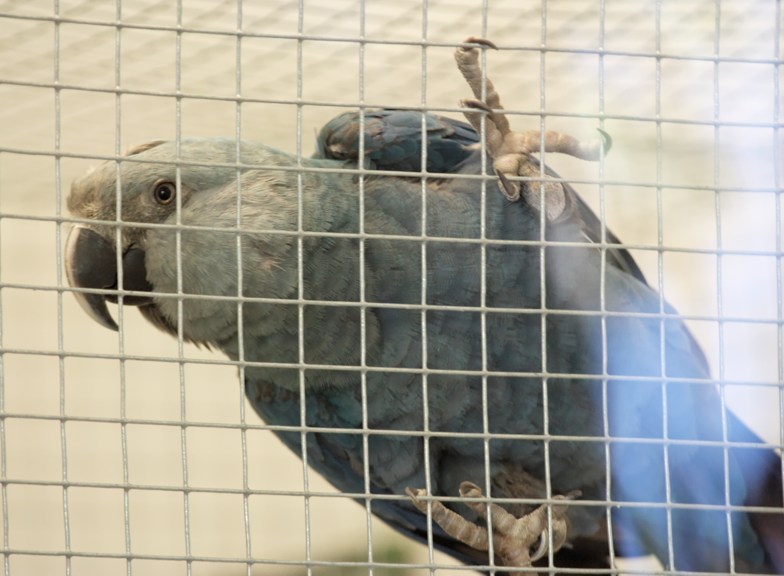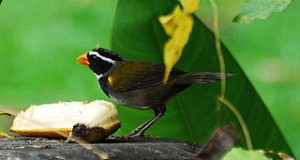August 1, 2008 – researchers working at the University of California (San Francisco) released the heartening news that they had identified the virus that causes Proventricular Dilation Disease (PDD), which has, since its emergence in the 1970’s, remained untreatable. PDD has caused the deaths of wild and captive parrots of over 50 species, as well as birds in 5 other avian orders. Aviculturists and conservationists consider it a major threat, especially to critically endangered species such as the Spix Macaw (of which less than 100 remain).
The virus, named Avian Bornavirus, is related to those that cause encephalitis in livestock, and attacks the nervous system. Infected birds are unable to swallow, digest food or maintain their balance, and eventually die.
 A test that enables technicians to positively identify the virus has also been developed. Birds afflicted with PDD are often misdiagnosed, due the overlap of the symptoms with a number of other diseases. It is believed that the test will assist in monitoring and limiting the spread of PDD, an extremely important step given that a cure still eludes us.
A test that enables technicians to positively identify the virus has also been developed. Birds afflicted with PDD are often misdiagnosed, due the overlap of the symptoms with a number of other diseases. It is believed that the test will assist in monitoring and limiting the spread of PDD, an extremely important step given that a cure still eludes us.
A veterinary journal article detailing a PDD outbreak in a parrot breeding center in Israel is posted at:
http://www.isrvma.org/article/61_1_3.pdf
Image referenced from Wikipedia Commons: http://en.wikipedia.org/wiki/Image:Spixara.jpg
 That Bird Blog – Bird Care and History for Pet Birds
That Bird Blog – Bird Care and History for Pet Birds



I have several types of parrots and was glad to see this article on PDD. I’ll have a few questions soon but for now wanted to aslk quickly- a friend recently told me that many years ago, in Poland, his brother raised a European starling (same species that lives here in America) and that the bird learned to speak several words very well. Is this possible?
Thank you.
Hello,
Frank Indiviglio here. I must thank you very much for your question…as you’ll see, it gives me a chance to somewhat “vindicate myself” in print!
When I was child, I frequented the “Nature Room” at the American Museum of Natural History in NYC. There were a number of live animals there, including, for many
years, a starling. One day I was shocked to hear the bird say “Hello”, as clearly as any parrot. The bird was very tame, and soon revealed the rest of his repertoire – a few more words, and a good impression of a whistling radiator. I have mentioned the story over the years…usually to unconvinced listeners or, at most, polite nods! Just recently a friend whom I did not know in childhood mentioned the bird in passing…but this is my first chance to put the story into writing. Thanks!
Actually, it does make sense that starlings can learn human speech…if you pay close attention, you may hear wild ones mimicking the calls and whistles of a variety of other birds…not with the skill of a mocking bird – but not bad either! The European starling, Sturnus vulgaris, is a Corvid, or member of the crow family, several species of which (i.e. various magpies) are talented mimics. I have cared for a few injured starlings over the years…those that proved un-releasable turned out to be very responsive, and tamed down quickly when placed in nature centers and other such situations.
Some interesting facts: the entire US starling population traces its origins to 2 releases of 60 and 40 birds in NYC’s Central Park in 1890 and 1894. They reached Florida by 1918, and are now found throughout all of the continental USA, southern Canada and northern Mexico. The fellow behind their release, Eugene Sheiffelin, apparently knew how to pick good colonizers…it seems he was responsible for introducing the house sparrow to North America as well!
I look forward to your parrot questions. Best regards,
Frank Indiviglio